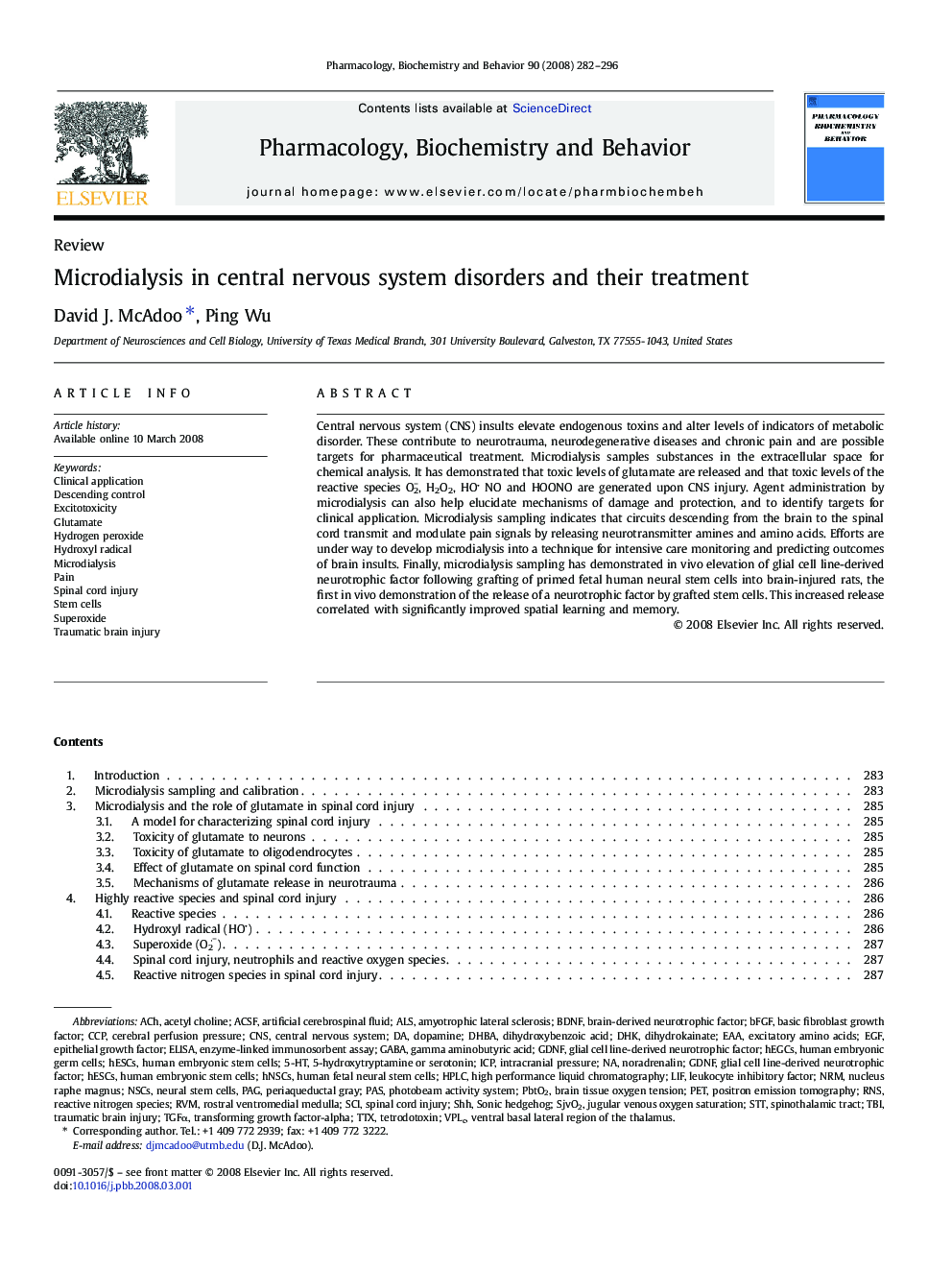| Article ID | Journal | Published Year | Pages | File Type |
|---|---|---|---|---|
| 2014408 | Pharmacology Biochemistry and Behavior | 2008 | 15 Pages |
Central nervous system (CNS) insults elevate endogenous toxins and alter levels of indicators of metabolic disorder. These contribute to neurotrauma, neurodegenerative diseases and chronic pain and are possible targets for pharmaceutical treatment. Microdialysis samples substances in the extracellular space for chemical analysis. It has demonstrated that toxic levels of glutamate are released and that toxic levels of the reactive species O2−, H2O2, HO· NO and HOONO are generated upon CNS injury. Agent administration by microdialysis can also help elucidate mechanisms of damage and protection, and to identify targets for clinical application. Microdialysis sampling indicates that circuits descending from the brain to the spinal cord transmit and modulate pain signals by releasing neurotransmitter amines and amino acids. Efforts are under way to develop microdialysis into a technique for intensive care monitoring and predicting outcomes of brain insults. Finally, microdialysis sampling has demonstrated in vivo elevation of glial cell line-derived neurotrophic factor following grafting of primed fetal human neural stem cells into brain-injured rats, the first in vivo demonstration of the release of a neurotrophic factor by grafted stem cells. This increased release correlated with significantly improved spatial learning and memory.
